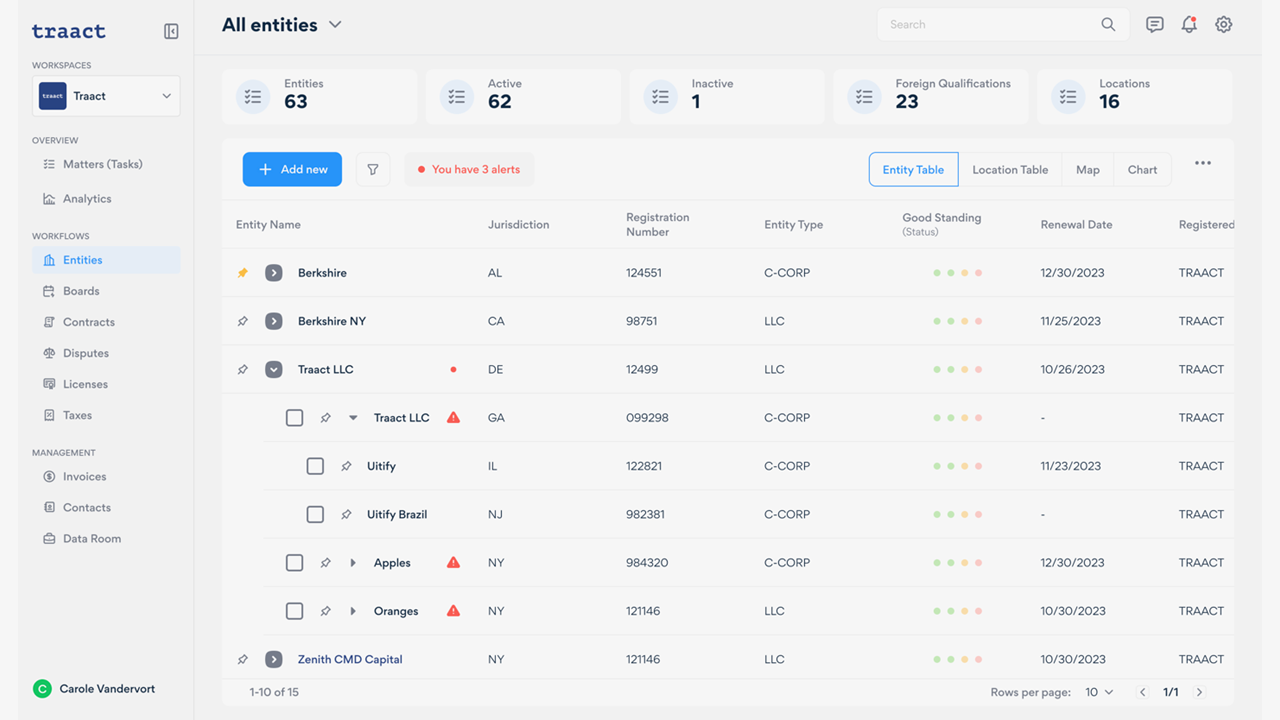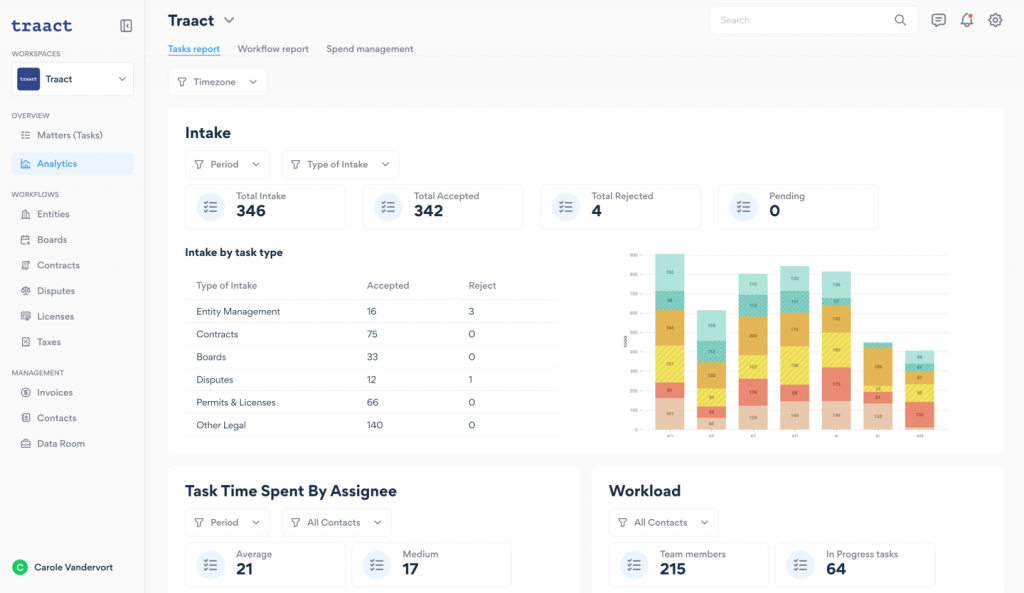Handling corporate functions such as entity management, board management and matter management can be complicated and time-consuming. But for corporate legal departments seeking to automate these functions, their choice of products is largely limited to point solutions, requiring multiple, siloed products to address multiple functions. Even worse, some of the available products are antiquated applications that simply adapted paper workflows to digital formats.
Aiming to solve this problem, a company led by engineers who previously worked for Uber, Google and Amazon are today launching Traact, a SaaS platform that integrates a range of corporation functions in an all-in-one platform, and weaves them together with a “tech-first” approach that includes digital collaboration, project management, and analytics tools.
Intended for customers in both corporate legal and law firms, Traact offers modules for entity management, permits and licensing, board management, matter management, contract management, disputes and litigation, finance and taxes (including spend management), and document management. Customers can buy any mix of modules, depending on their needs, with flat-fee pricing based on the customer’s number of entities.
“Our vision is to make Traact the solution for all legal and administrative functions, cutting across existing corporate silos and offering a single, centralized point of reference and action,” said Robert Holdheim, chief operating officer. “Wrapping these functions in a suite of modern digital collaboration and project management tools will drive both dramatic gains in efficiency and substantial reductions in cost.”
While it it officially launching today, Traact says it has already attracted interest from dozens of customers, most of them enterprise corporate legal departments. Traact says it is also in discussions with top law firms about leveraging the platform to manage their legal services. The platform can also be used by private equity firms to manage their investment portfolios.
Technology-First Approach
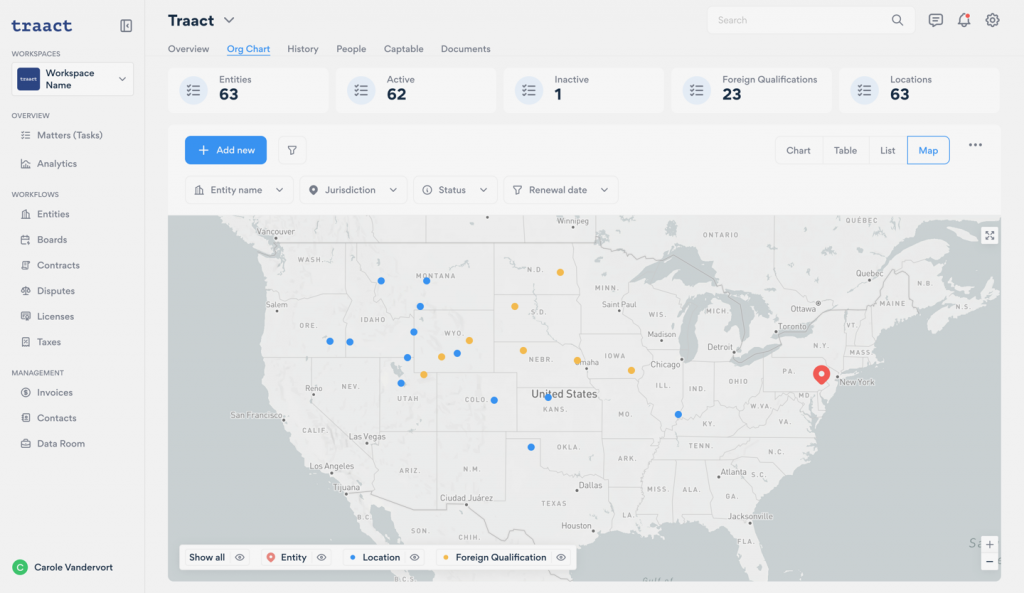
Traact can automatically generate maps of entities’ locations, both domestic and international.
Yesterday, I was given a brief demonstration of the product by Steven Choi, CEO and cofounder, and COO Holdheim. Choi and his cofounder Afif Ahmed, now CTO, were both computer scientists who worked at companies such as Google, Amazon and Uber. Holdheim is an entrepreneur and business executive and former managing director with Edelman.
One of the key differentiators of the product, Holdheim said, is that it was developed using a technology-first approach. While some companies, especially in areas such as entity management, have simply taken a paper process and stuffed it into a digital filing cabinet with some bells and whistles, “we are technology first and have developed around the technology.”
That means that the product not only offers the core functionality to handle corporate processes, but it wraps that functionality into modern collaboration and project management tools, he said.
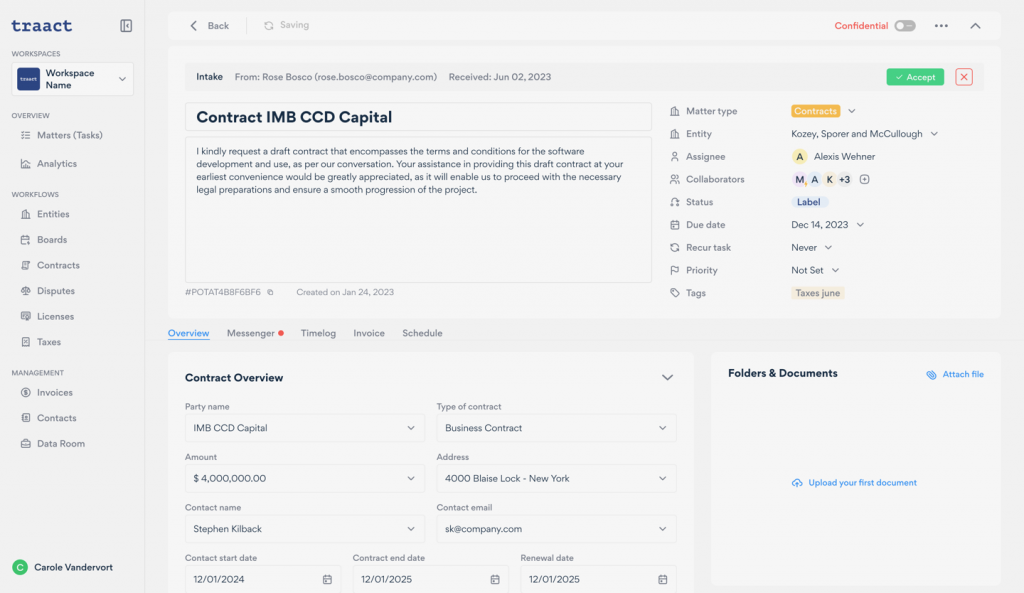
Traact has an intake feature that can be configured to trigger predefined workflows or assignees. Matters are organized into Workspaces.
“That enables us to do the entire gamut of functionalities from what I would call the core stuff — which is entity management, licenses and permits, matter management and so on — to the more value-added areas like contract lifecycle management and board management and dispute management,” Holdheim said.
Still, he admitted that, even as potential customers are clearly dissatisfied with the need for multiple point solutions, some have also expressed skepticism about whether any one product can be good at multiple functions.
But he said that, as Traact’s developers “blew up” the standard approach to corporate functions and started rebuilding from scratch, it became clear that what may appear to be eight different functions actually are not. “We found that there’s so much overlap, in terms of process, that they aren’t really eight things. They all operate from the same base of data, they all use the same core functionalities in terms of project management tools.”
By uniting these products, he said, Traact not only delivers significant efficiency gains, but also eliminates the silos and training requirements of multiple point solutions.
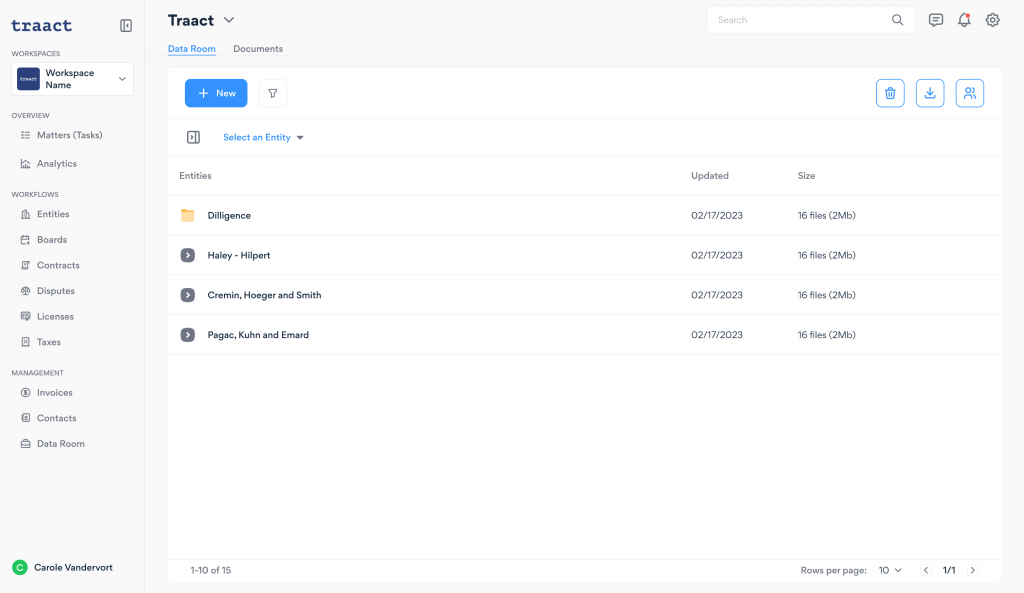
Because all the corporate data is kept in Traact, it can easily be dragged and dropped into the deal room for due diligence.
The Desktop for Any Corporate Function
“If you ask us what’s our ultimate goal or ultimate vision, we would like to be the desktop where you can do any corporate function, or through which you can do any corporate function whether we offer it or someone else offers it through our platform.”
Choi and Holdheim recognize that there are other “technology first” companies serving this market, but they say that Traact’s biggest differentiator is that all the others are point solutions that address specific functions, such as entity management or contract management.
“We never see an organization that says, ‘Hey, we just need to fix entity management, or we just need to fix spend management and e billing, or we just need to fix our contract issues,'” Choi said. “They need to fix multiple of these things to reduce costs across the organization and set up uniform processes.
“You could go with a point solution or you could go and solve all these issues with a single tool, right. I think that’s the main differentiator we have.”
Initial Focus on Corporate Legal
While Traact sees its potential market as including law firms, private equity firms, accounting firms, and others, it will primarily focus its initial sales on corporate legal and, to a lesser extent, law firms.
Legal departments are the group that has the most consistent need for a product such as this, Holdheim said, and the need is fairly uniform from company to company, making it easier to address with a single product.
Law firms are also a target market for the company. Holdheim said firm can not only use the product for their own internal processes, but they can also leverage it to serve the corporate needs of their broader client base.
Even if a customer wants to use Traact for just a single module, Choi and Holdheim say it will still save the customer time and money.
But so far, customers that have tried just one or two modules have quickly expressed interest in additional ones, they say.
“Think about how much you’re spending on each of those point solutions to really get your legal tech stack across the board, right,” Choi said. “What if you could do all that with a single price equal to what any one of those point solutions would charge?”
 Robert Ambrogi Blog
Robert Ambrogi Blog